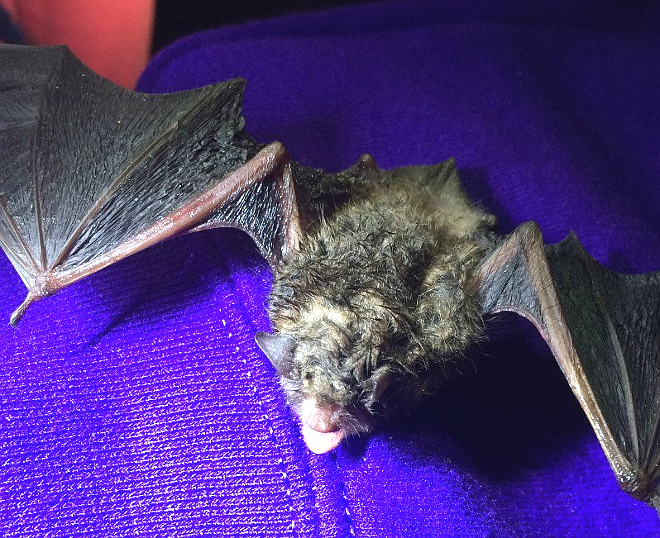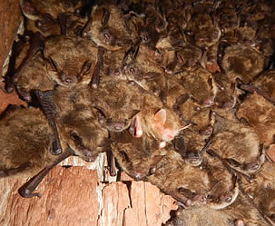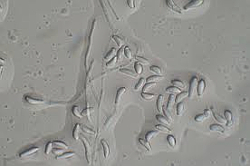 |
| Photo by Daniel Lindner, U.S. Forest Service |
| A little brown bat being checked for deadly white-nose syndrome. |
P. destructans is the fungus that causes white-nose syndrome (WNS), a disease that has killed millions of hibernating bats in North America in the past decade, including North Idaho, and for which, so far, there has not been a successful treatment.
 |
| Photo by Brian Heeringa, U.S. Forest Service |
| Little brown bats hibernating. |
The discovery could lead to treatments for what is potentially the most catastrophic wildlife disease of the century.
The fungal disease was first documented in 2006 in eastern North America, New York, and the fungus has advanced west across the continent, most recently being detected on the west coast. Research has identified that there was a single introduction of P. destructans into North America in 2006, which has since spread to 31 states, including an apparent long-distance jump to Washington state.
 |
| P. destructans |
WNS can result in a 90-percent or greater mortality in local hibernating bat populations. Frequent arousal from hibernation, depletion of fat reserves and dehydration appear to contribute to mortality in infected bats.
P. destructans has been found throughout Eurasia and it occasionally causes mild WNS symptoms; however, no mass mortality events have been observed in Eurasia. The fungus has spread in a “bulls eye” pattern in North America and has only been found in environments where WNS-infected bats are found, strongly suggesting that the fungus is not native to North America.
The study, which was funded by the U.S. Fish and Wildlife Service, was published in the journal Nature Communications and is available by clicking here.